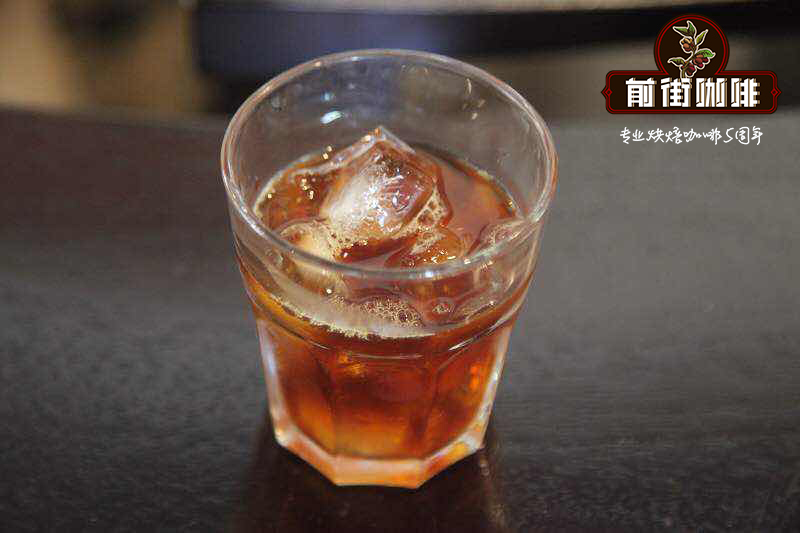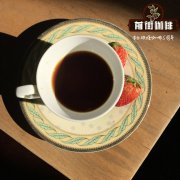The planting history of Java coffee beans? What's the coffee story? How to cook Java coffee beans

Professional coffee knowledge exchange more coffee bean information please follow the coffee workshop (Wechat official account cafe_style)
The planting history of Java coffee beans? What's the coffee story? How to cook Java coffee beans?
Java coffee was brought to Indonesia by the Dutch in about 1696 and has been cultivated for more than 300 years. West Java province is a first-tier administrative district of Indonesia. Located in the western part of Java, facing the Java Sea to the north and the Indian Ocean to the south, including offshore islands, covering an area of 46300 square kilometers, Java has a tropical rain forest climate, which is hot and humid all the year round. The plains along the northern coast have the highest temperatures, while the mountains are much cooler. High humidity often creates a debilitating climate.
From November to March of the following year is the northwest monsoon period, rainy and cloudy; from 4muri to October is the southeast monsoon period, with more sunny days and less rainfall. The average annual rainfall in Jakarta is about 1760 mm (69 inches). The average daily maximum temperature in Jakarta is 30 ℃ (86 ℉) and the lowest is 23 ℃ (74 ℉). In the inland highlands of Tosari (Tosari, 1735 meters (5692 feet) above sea level), the average temperature is 22 ℃ (72 Murray 47 ℉). Because volcanic ash periodically fertilizes the land.
85% of Java coffee is produced in complex volcanoes near Ijen in the east of Java. The range of heights suitable for coffee production is 3000 to 6000 feet, while Java Arabica coffee is concentrated on the Ijen plateau, at the eastern end of Java, at a height of more than 1,400 meters.
In the late 1880s, a rust spot spread like a plague in the Sukabumi area, destroying most coffee plantations. At that time, the Dutch replaced Arabica with Liberica (Liberika, a tough, but not very tasty coffee), and then changed to Robusta (Robesda), which was highly productive and could be cultivated at low and middle elevations with strong disease resistance, until the Java authorities successfully restored the Arabica tree species. At this time, the center of gravity of Java coffee was slowly transplanted from eastern Java to the present central region. Compared to the total number of Robusta, the Arabica in Java is only a small amount. The five major producing areas are Blawan (also spelled Belawan or Blauan), Jampit (or Djampit), Pancoer (or Pancur), Kayumas and Tugosari, covering an area of more than 4000 square meters.
Java coffee is famous in the early years, which refers to Arabica coffee formerly grown on the island of Java. It has a strong aroma, low acidity, taste lubrication, mixed with mocha coffee, the resulting "Java mocha mixed coffee" was once popular and became synonymous with top coffee.
At that time, Java coffee sold to Europe was a very special kind of coffee. At that time, it was shipped to Europe and the United States by sailboat, and the distance was long and the speed was slow, so it took a lot of time to transport. In this case, the coffee seems to have undergone a special fermentation and has a very unique taste.
Later, when the ship replaced the sailboat, due to the shortened delivery time, people drank relatively fresh coffee beans. But people who are used to drinking Chen beans are not used to the fresh taste, so they desperately pursue old Java coffee, so that the Indonesian government and some businessmen deliberately store fresh beans in warehouses for one or two years and then sell them to consumers. In fact, compared with fresh beans, the acidity of aged Java beans is close to zero, but the flavor is more intense. Because of the long storage time, the increase in cost and the limited quantity, Java has always been a hot item in the coffee market. In the 1880s, some profiteers deliberately tampered with some fresh Guatemalan or Venezuelan beans to mimic the high prices of old Java. It is intolerable that profiteers dye coffee beans to make them look more like old Java, but there is no doubt that the dyed chemicals are certainly toxic.
Java produces only a small amount of Arabica beans, most of which were imported from Africa after the rust disaster. This coffee has a strong bitter taste after roasting, but the aroma is extremely light. Although the acidity is low and the taste is delicate, it is rarely used for direct drinking. It is often used to mix mixed coffee or to make instant coffee.
Diseases and insect pests are really a powerful thing. It has greatly reduced coffee production in Brazil and repeatedly influenced the international coffee market. It has also made Sri Lanka, which used to plant coffee trees, cut down coffee trees and plant tea instead. It also makes Java, which is rich in high-quality Arabica coffee, switch to Romsda coffee for fear of diseases and insect pests. Arabica Java coffee, which is regarded as a treasure, has been out of sight since then, and people's unlimited favor and pursuit of Java coffee has been lost ever since.
Java coffee is all wet-treated. Java coffee is a special coffee, it has the rich and concentrated characteristics of Asian coffee, but it does not have the common earthy smell and damp musty smell of Sumatra, Sulawesi and Bali coffee. The acidity is delicate, with natural aromas of herbs and spices, with a hint of sorghum, sweet grain and syrup, and a hint of tobacco, sometimes with subtle herbal notes in the aftertaste.
Drinking Java coffee can best experience the artistic conception of bitterness. All coffee can feel bitter only in the first few mouthfuls, and will no longer feel bitter after the mouth has adapted to that slight bitterness. Java coffee is sweet with bitterness, and every mouthful of bitterness is clear, and the return sweet is deeper and stronger than any coffee. However, Java coffee is also unstable because of the drying part and storage conditions in the process of raw bean processing, so not all Java coffee beans can have the flavor performance described above.
The only recognized perfect blend bean in the world is made of Java coffee mixed with the best Yemeni mocha coffee. Long before Java was infected with the rust spot, Java beans, with its unique flavor and Yemeni mocha coffee, was praised as the perfect combination of the most complete and fast matching flavor, red wine-like aroma, brewing-like mellow, fine fruit acid, with fructose-like fruit aroma, and pure throat rhyme, is an unforgettable memory for all who have drunk it. Although after a devastating disaster, the taste of Mocha Java is not as impressive as before, as long as it comes to blended coffee, the world all recommend the matching of Mocha Java, which proves the extent to which they are cherished!
A small number of aged coffee beans are made in Java. First, the raw beans are exposed to warm, moist air during the rainy season, and then stored for 2-3 years to age them. The color of the raw beans will change from green to light brown, and the taste will increase the concentration and consistency when the acidity is lost. These old coffees are called Old Government, Old Brown or Old Java.
Flavor: the aroma of Java coffee is full-bodied and thick, with clear high-quality acidity, high balance, and sometimes nutty taste. In terms of appearance and quality, Java coffee is excellent, just like a woman's vaguely charming, charming and just right, memorable.
Each caffeine variety has a different origin and has its own strong personality, such as the masculine Mantenin, which resembles the character of an iron and steel man, the mellow fragrant Blue Mountain coffee, and the gentle woman's yearning addiction. Java Coffee, which has always been light and fragrant, is suitable for those who like light sex. Such people do not want to drink coffee as a sitting thing, from sour, sweet, bitter, astringent experience what profound philosophy of life, just want to simply drink a cup of delicious coffee, a cup of hot Java coffee, let these people realize that "the realm of life is rich and quiet." Quiet, because of getting rid of the temptation of external fame and gain; rich, because of having the treasure of the inner spiritual world. The happiness of life is to reap such an incisive interpretation of the realm.
Qianjie recommended cooking:
Filter cup: Hario V60
Water temperature: 88 degrees
Degree of grinding: small Fuji degree of grinding 4
Cooking methods: the ratio of water to powder is 1:15, 15g powder, the first injection of 25g water, 25 s steaming, the second injection to 120g water cut off, waiting for the powder bed water to half and then water injection, slow water injection until 225g water, extraction time about 2:00
Analysis: using three-stage brewing to clarify the flavor of the front, middle and back of the coffee. Because the V60 has many ribs and the drainage speed is fast, it can prolong the extraction time when the water is cut off.
Important Notice :
前街咖啡 FrontStreet Coffee has moved to new addredd:
FrontStreet Coffee Address: 315,Donghua East Road,GuangZhou
Tel:020 38364473
- Prev

How many coffee producing areas are there in Indonesia? What is the variety of Indonesian coffee beans? Is there any way to treat raw beans?
Professional coffee knowledge exchange more coffee bean information please follow the coffee workshop (Wechat official account cafe_style) how many coffee producing areas are there in Indonesia? What is the variety of Indonesian coffee beans? Is there any way to deal with raw beans? Indonesia exported 300000 tons last year, making it the fourth largest coffee producer in the world. About 75000 tons are Arabica coffee. These coffees are 90%
- Next

Indonesia's delicious coffee brand-Sulawesi coffee bean Toraja Tonaga's planting history? Such as
Professional coffee knowledge exchange more coffee bean information please follow the coffee workshop (Wechat official account cafe_style) Indonesia's delicious coffee brand-Sulawesi coffee bean Toraja Tonaga's growing history? How to cook Sulawesi coffee beans? Sulawesi is the fourth largest island in Indonesia, the island is shaped like an orchid, the shape is very distorted, but also like the English word K, so Indonesians
Related
- Detailed explanation of Jadeite planting Land in Panamanian Jadeite Manor introduction to the grading system of Jadeite competitive bidding, Red bid, Green bid and Rose Summer
- Story of Coffee planting in Brenka region of Costa Rica Stonehenge Manor anaerobic heavy honey treatment of flavor mouth
- What's on the barrel of Blue Mountain Coffee beans?
- Can American coffee also pull flowers? How to use hot American style to pull out a good-looking pattern?
- Can you make a cold extract with coffee beans? What is the right proportion for cold-extracted coffee formula?
- Indonesian PWN Gold Mandrine Coffee Origin Features Flavor How to Chong? Mandolin coffee is American.
- A brief introduction to the flavor characteristics of Brazilian yellow bourbon coffee beans
- What is the effect of different water quality on the flavor of cold-extracted coffee? What kind of water is best for brewing coffee?
- Why do you think of Rose Summer whenever you mention Panamanian coffee?
- Introduction to the characteristics of authentic blue mountain coffee bean producing areas? What is the CIB Coffee Authority in Jamaica?

